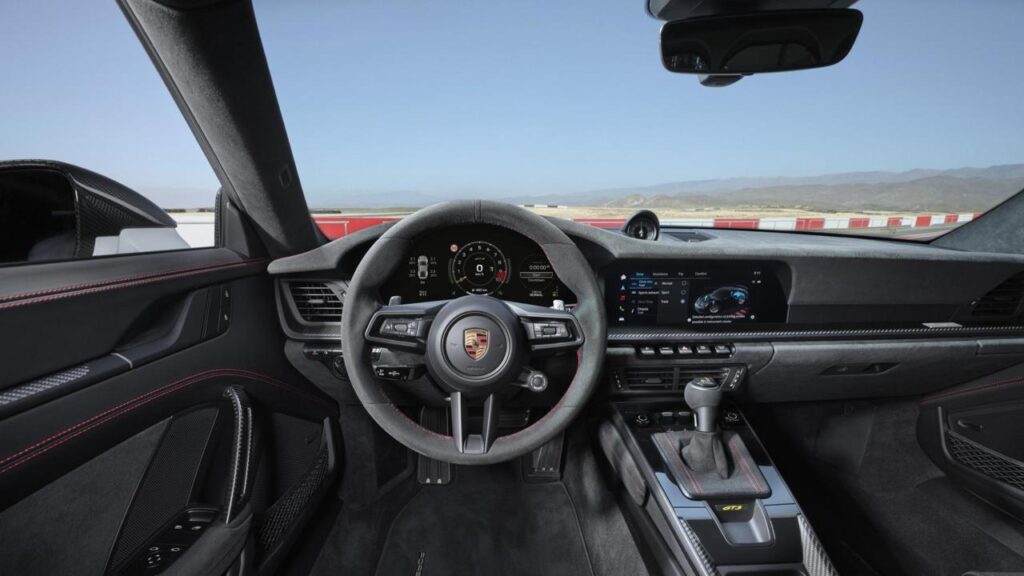The highly anticipated new Porsche 911 GT3 has arrived, and initial reviews are pouring in.
What Has Changed? Or Rather, What Hasn’t?
At first glance, the new 992-generation GT3 appears remarkably similar to its predecessor.
In fact, it shares the same 4.0-liter flat-six engine, producing 510PS (375kW), marking the first time in GT3 history that power has remained unchanged from one generation to the next. Performance figures remain identical, and the six-speed manual and seven-speed PDK gearbox options are also carried over.

So, what’s different? The changes are subtle:
The engine now delivers slightly less torque, compensated by a shorter final drive ratio (8% lower).
The car has gained 20kg in weight, mainly due to emissions-related components such as additional catalytic converters.
The suspension features shorter bump stops for marginally increased wheel travel, beneficial when tackling aggressive kerbs at high speed.
Visually, it adopts updated dashboard electronics from the second-generation 992 series.
The Touring model now offers rear seats, making it the first-ever GT3 capable of seating more than two passengers, though, as with most 911 rear seats, practicality remains limited.

Why Has Porsche Kept the GT3 So Similar?
Rather than a sign of complacency, Porsche’s decision to preserve the GT3’s core formula stems from two critical factors.
Stringent Emissions Regulations: Meeting modern global emissions standards while maintaining a naturally aspirated 4.0L flat-six engine is no small feat. As other manufacturers downsize engines, add turbochargers, or incorporate hybrid technology, Porsche has had to make structural modifications and introduce additional catalytic converters just to retain the
same level of performance.
The GT3 Has Reached Its Peak Form: Just like nature refines certain species to near perfection, think of a shark, which has remained largely unchanged for millions of years, the 911 GT3 has evolved to a point where further radical changes would not necessarily improve it. The GT3 has never been about raw horsepower; it has always prioritized balance, handling, and driver engagement. Altering its core formula could risk diminishing the very essence that makes it so revered.
Why This Should Be Celebrated, Not Criticized
Rather than lamenting the lack of radical updates, Porsche enthusiasts should appreciate what has been achieved. The GT3 has stayed true to its roots, avoiding unnecessary weight gain or excessive technology that could dilute the raw driving experience.

Looking ahead, the next GT3, expected to arrive within the next five years, will likely face even greater regulatory and environmental challenges. Porsche will have to find innovative ways to keep the naturally aspirated GT3 concept alive, especially with increasing pressure toward electrification.
For now, though, fans of the purest, most driver-focused 911 can take comfort in the fact that the new GT3 remains a precision tool built for driving purists. Sometimes, the best innovation is knowing when to leave perfection alone.
If you want to explore advertising with us, I encourage you to get in touch. Please feel free to contact me directly, and I will be more than happy to provide you with further information, answer any questions you may have, and guide you through the process.
Nick Aylieff | Classic Motors For Sale |
+44(0) 2392 160 809 | www.classicmotorsforsale.com














































































